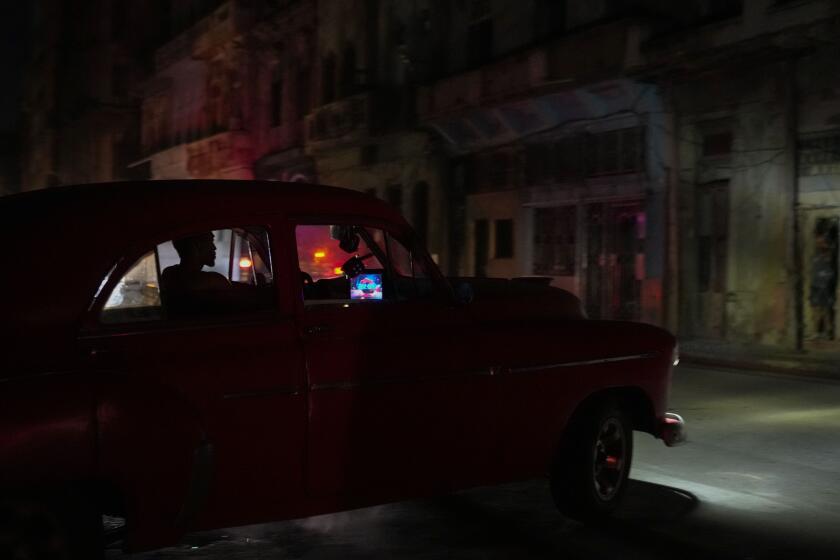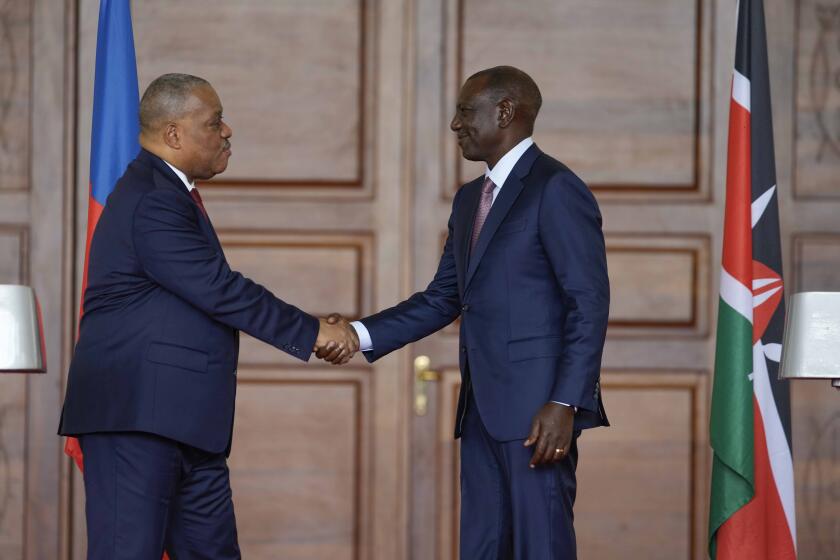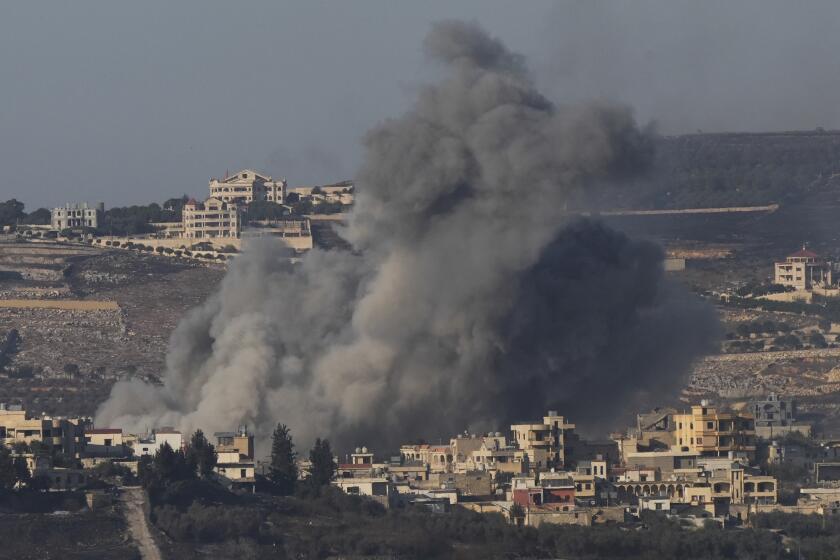Signs of Life Seen in Mexico’s Anti-Drug Drive
Mexico’s professed dedication to curbing narcotics cultivation and traffic has shown some signs of life in recent months, U.S. drug enforcement officials here say, but a major test of Mexico’s intentions will come this fall during a major narcotics crop destruction drive.
For the first time, Mexican authorities are supplying the U.S. Drug Enforcement Administration with verifiable information on the destruction of marijuana and opium crops.
In addition, major seizures of cocaine bound for the United States from Latin America have been reported and confirmed.
Mexico produces one-third of the marijuana and heroin sold in the United States and is the leading way station for cocaine bound for the U.S. market from producing countries like Colombia and Peru.
The drug flow from Mexico was one of the topics discussed in talks between President Reagan and Mexican President Miguel de la Madrid in Washington on Wednesday. Recently, U.S. lawmakers have criticized Mexico for inaction in curbing drug traffic. Last year, the State Department characterized Mexico as the “principle disappointment” in worldwide efforts to eradicate narcotics crops.
Signals of increased attention to anti-narcotics campaigns followed an April meeting between U.S. Atty. Gen. Edwin Meese III and his Mexican counterpart, Sergio Garcia. The meeting, which took place in the Mexican resort of Cancun, produced secret promises from Garcia of action to curb drug traffic from Mexico.
One of the promises made, according to U.S. sources, concerned the delivery of information regarding the destruction of marijuana and opium crops. The first reports from Mexican authorities were handed to the U.S. Embassy here about two weeks ago, leading to speculation that the promise of reports was fulfilled with an eye toward the De la Madrid-Reagan summit.
U.S. agents are also being permitted to accompany Mexican pilots on aerial spraying forays over cultivation sites. In the past, the United States has funded programs aimed at destroying the crops using poison sprayed by helicopters and light airplanes. Congress is now considering giving $2 million to Mexico to help finance an autumn crop eradication drive.
Figures for crop eradication during the first six months of 1986 showed little improvement over 1985. Mexico destroyed about 4,300 acres of opium poppy and marijuana through June, about the same amount as in the first six months of last year.
U.S. officials are counting on a better performance this fall. They contend that 34 pilots have been trained for dusting the crops with herbicides, 83 aircraft are available for duty and other problems plaguing the program have been solved. “There are no more excuses,” a U.S. official said. “The resources are there and the pilots are there.”
The target will be a mountainous region in western Mexico where the states of Durango, Chihuahua and Sinaloa meet. This Mexican “Golden Triangle” has long been a haven for drug cultivators and traffickers, and it is dangerous country. In recent weeks, three government helicopters have been fired on from the ground while on drug-spraying forays.
Meanwhile, the Mexican government has announced several spectacular cocaine busts. On Tuesday, Mexican authorities announced that they had seized more than 1,000 pounds of cocaine and arrested eight traffickers in the northern state of Sonora.
According to Mexico’s attorney general’s office, the cocaine was flown to Mexico on July 22 and was discovered by police when it was being transfered from one hiding place to another.
Mexico’s largest cocaine seizure took place in April at Tijuana when more than a ton of cocaine was discovered after an eight-month investigation.
U.S. officials were cautious when discussing the significance of the seizures. “We have seen these blips before,” commented one. “Let’s see if it lasts.”
This born-again anti-narcotics activity has not yet included prosecution of any of the suspects in the 1985 murders of U.S. drug agent Enrique S. Camarena and a pilot and informer working with him, Alfredo Zavala.
The failure to prosecute anyone for the torture-murders has created a running irritant in relations between Washington and the Mexican government.
Among the suspects under arrest are Rafael Caro Quintero and Ernesto Fonseca, reputed to be prime drug traffickers in Sinaloa and Jalisco. Still free is Felix Gallardo, alleged to be a major cocaine and heroin ringleader in Sinaloa, and Manuel (Crazy Pig) Salcido, an alleged hit man and marijuana dealer.
Named as Mastermind
U.S. officials have pinpointed Gallardo as the mastermind of the Camarena killing. Last week, Mexican police arrested Hugo Devere, a businessman, who is said to have bought an airplane on behalf of Gallardo and to have set up business fronts for Caro Quintero.
According to published reports, Devere told police he met with Gallardo in Monterrey after the Camarena-Zavala murders. Devere said Gallardo told him he had nothing to do with the slayings and fingered Caro Quintero as the man responsible.
In any event, no one has been brought to trial despite pressure from Washington, which at one point closed the border with Mexico to compel the Mexican government to make arrests in the case.
More to Read
Sign up for Essential California
The most important California stories and recommendations in your inbox every morning.
You may occasionally receive promotional content from the Los Angeles Times.










